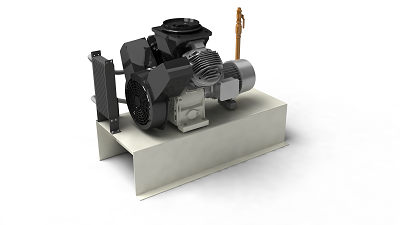The international standard ISO 8573-1 (2010), “Compressed air — Contaminants and purity classes,” provides a classification system for the main contaminants in compressed air systems. The standard specifies a number of purity classes for compressed air with respect to particulates, water and oil, independent of the location in the compressed air system at which the air is measured. In addition, it identifies gaseous and microbiological contaminants in a system.

The standard delineates eight purity classes for solids contamination that range from 0 (least contaminated) to 7, plus a Class X for air samples that exceed a particulate mass concentration of 10 mg/m3. Likewise, it specifies purity classes with respect to water and oil. Other parts of ISO 8573 detail methods for actually measuring these contaminants.
Class 1 is the second most-stringent (“cleanest”) section. It specifies the maximum number of particulates per cubic meter as:
• ≤20,000 particles from 0.1 to 0.5 µm in size.
• ≤400 particles from 0.5 to 1.0 µm in size.
• ≤10 particles from 1.0 to 5.0 µm in size. It also specifies:
• Pressure dewpoint of ≤-70° C, and no liquid water allowed.
• Concentration of total oil (liquid, aerosol and vapor) as ≤0.01 mg/m3.
Class 0, in contrast to the other classes’ empirical data, is simply classified “As specified by the equipment user or supplier and more stringent than Class 1.” Thus, Class 0 requires that the user and equipment manufacture agree to contamination levels as part of a written specification, and the spec should adhere to the guidelines and measurement capabilities of the test equipment and the test methods defined in ISO 8573 parts 2 through 9.
However, Class 0 does not mean zero contamination.
A number of compressor manufacturers say that air delivered from their oil-free compressors complies with Class 0 standards. But users should be aware that a Class 0 compressor still requires air filtration and treatment upstream and, possibly, downstream of the compressor, depending on the operating conditions and the state of the incoming air. For instance, a system installed in a contaminated industrial location laden with airborne oil aerosols and vapor could pass right through the compressor and invalidate the Class 0 rating. Thus, it is always good practice to install particulate filters, coalescing filters, coolers, and desiccant or refrigerant dryers as needed.
Suppliers offer a wide range of oil-free compressors, including piston, rotary screw and scroll types that let users meet Class 0 conditions. The purchase price of an oil-free unit can be up to 40 to 50% higher than that of an equivalent oil-lubricated compressor, and the devices may need more-frequent maintenance to replace components like Teflon seals. And in terms of life, they may not last as long as a lubricated unit, as internal lubricating coatings degrade and wear away over time.
Makers of oil-free compressors counter that when it comes to overall cost of ownership, in the long run oil-free technology actually costs less because it eliminates expensive filter replacements, less energy is consumed overcoming the pressure drops in filters, and there is no cost to treat oily condensate.
Perhaps the overriding benefit when it comes to costs is that ISO 8573-1 (2010) Class 0 systems eliminate risks. Used in the proper settings, they help minimize the prospect of compromised or damaged products, expensive operational downtime, and damage to a company’s reputation — all of which could be worth much more than the price tag of a compressor.
That’s why in pharmaceutical, food and beverage, electronics, textiles and other critical industries, where even trace amounts of oil could damage products and potentially harm consumers, users often opt for Class 0 systems.
For example, in food and beverage operations, ultra-clean compressed air is routinely used for sorting, ejecting, mixing, inflating and packing products. It is used to transport powdered milk or cocoa powder through pipes. And pressurized air is needed for cleaning bottles, packaging and molds prior to filling. In fermentation processes, compressed air is pumped into liquids to make food ingredients like citric acid and products like yogurt. And compressed air cools baked goods after they emerge from ovens.
In all these instances, even minute oil percentages could alter the flavor and odor of food items or spoil the end product, and lead to substandard quality, rejects and production losses.
Likewise, the medical community requires safe and oil-free air and vacuum in hospitals, dental practices and veterinary labs for uses ranging from surgical air to breathing. Textile applications demand oil-free air to avoid contaminating products in applications like weaving, spinning, texturizing, winding and dyeing. And automotive lines demand the highest quality compressed air in spray paint applications to ensure defect-free finishes.
Class 0 compressors in these applications deliver high-purity air that helps prevent costly production downtime and compromised products. Oil-free systems also help protect the environment and ensure users comply with various industrial standards and international regulations.

Leave a Reply